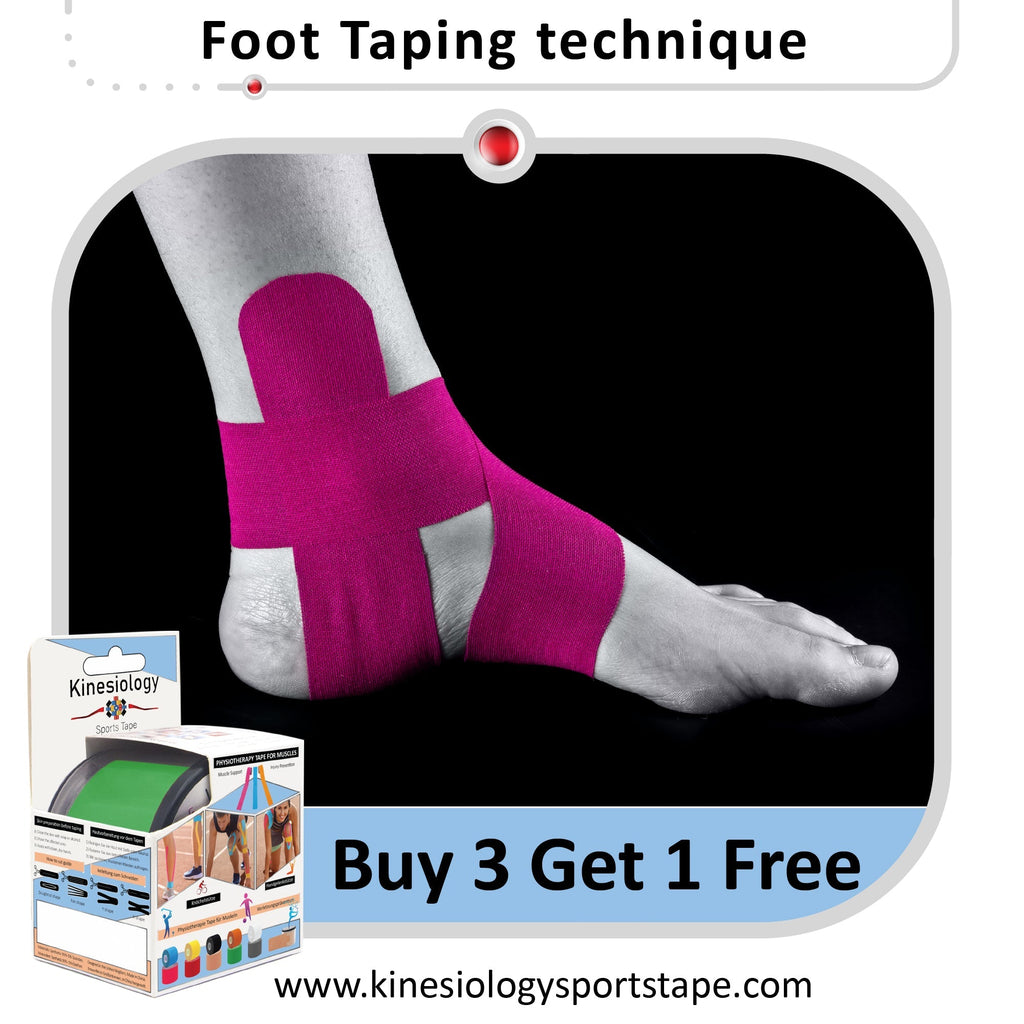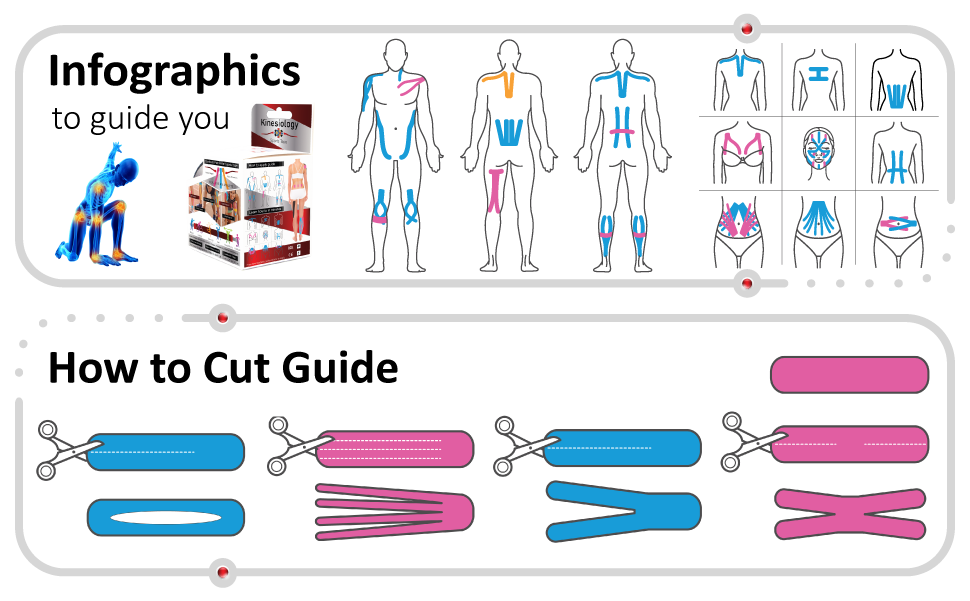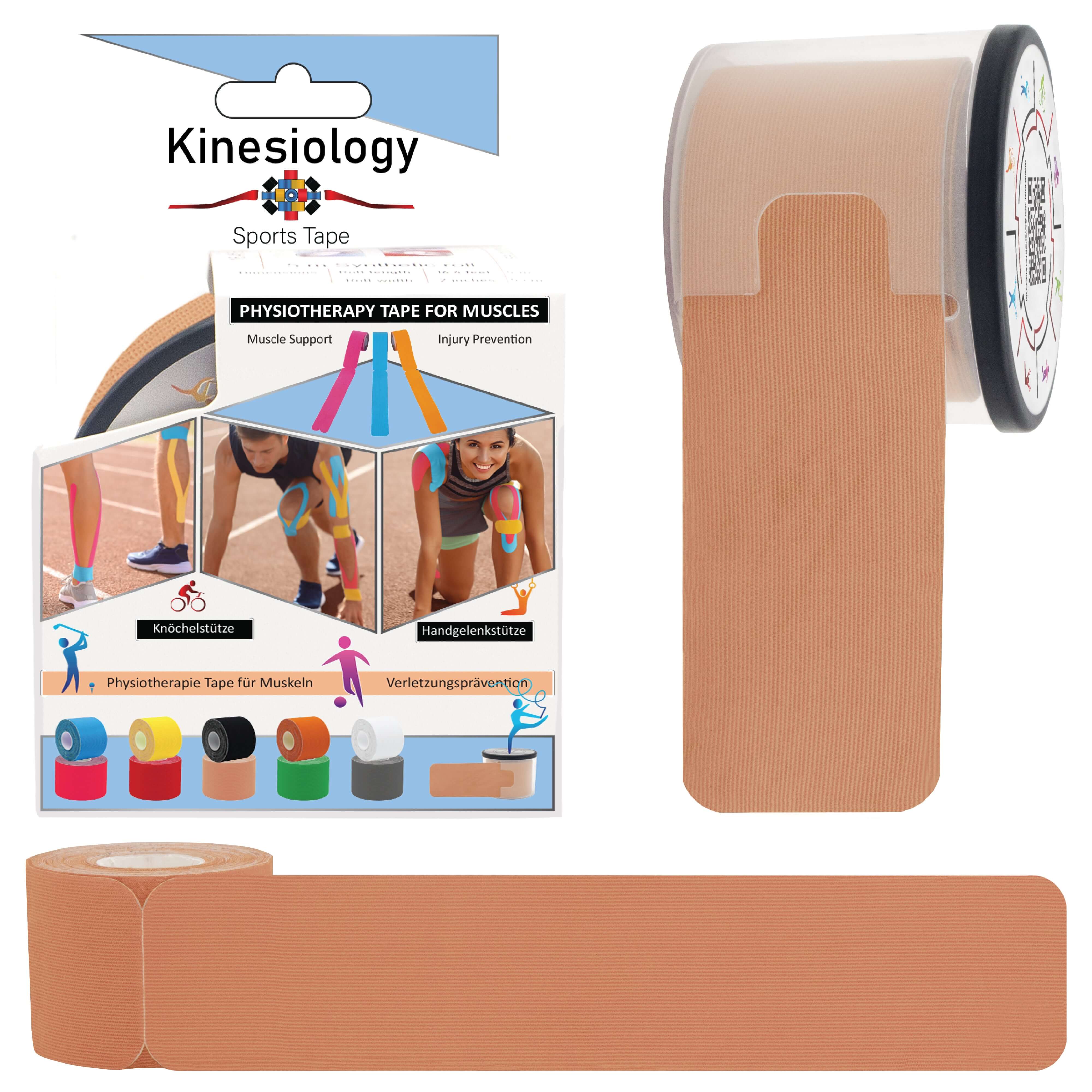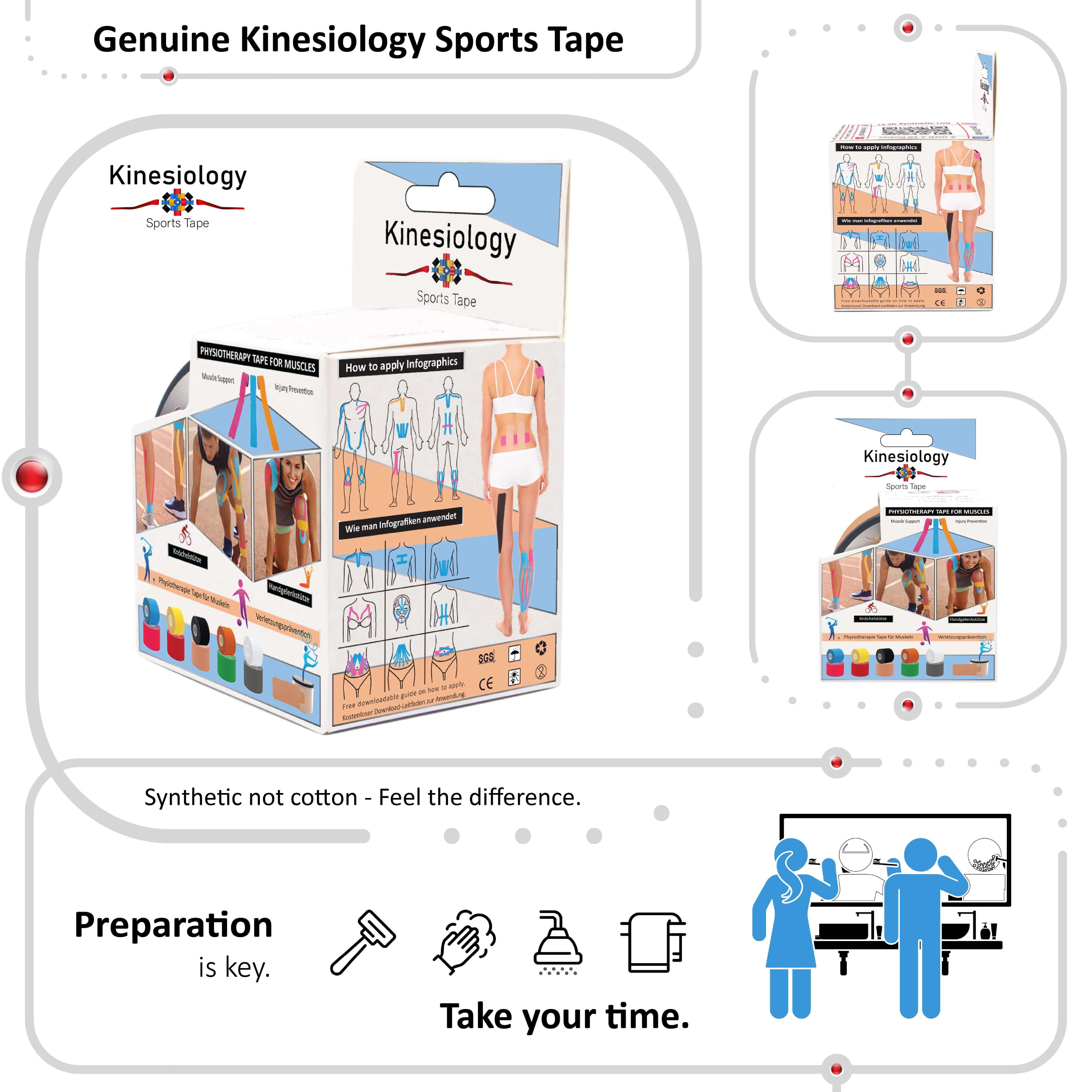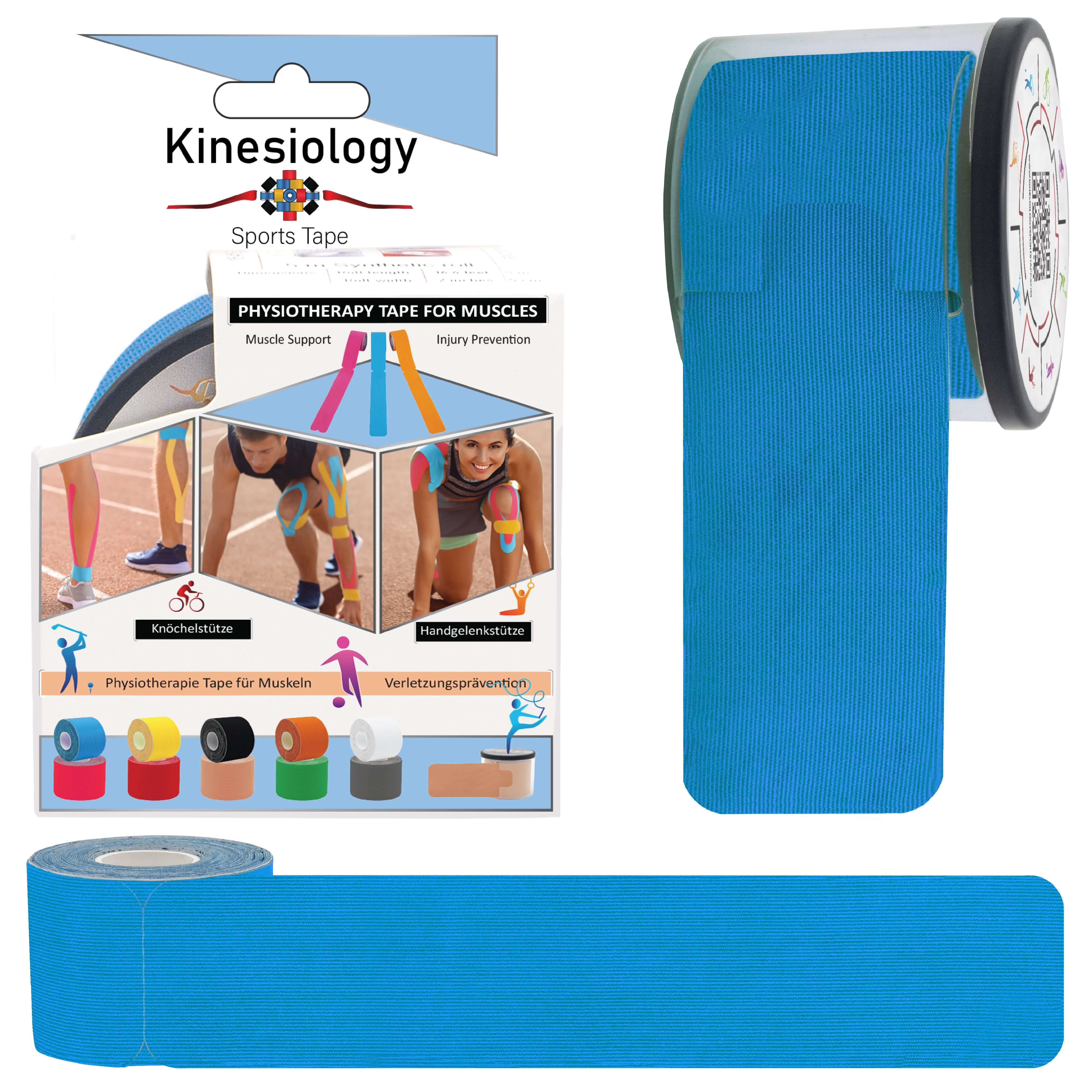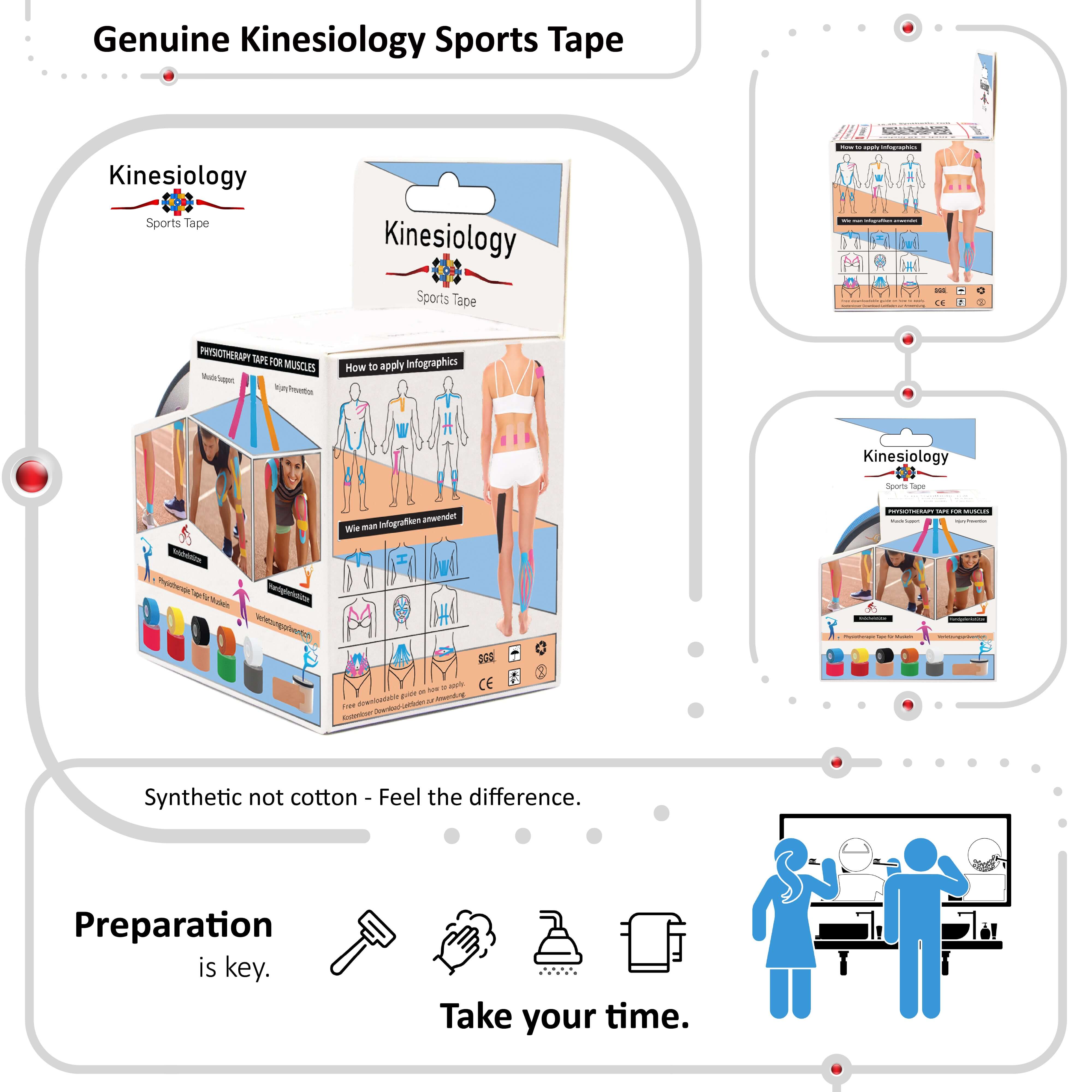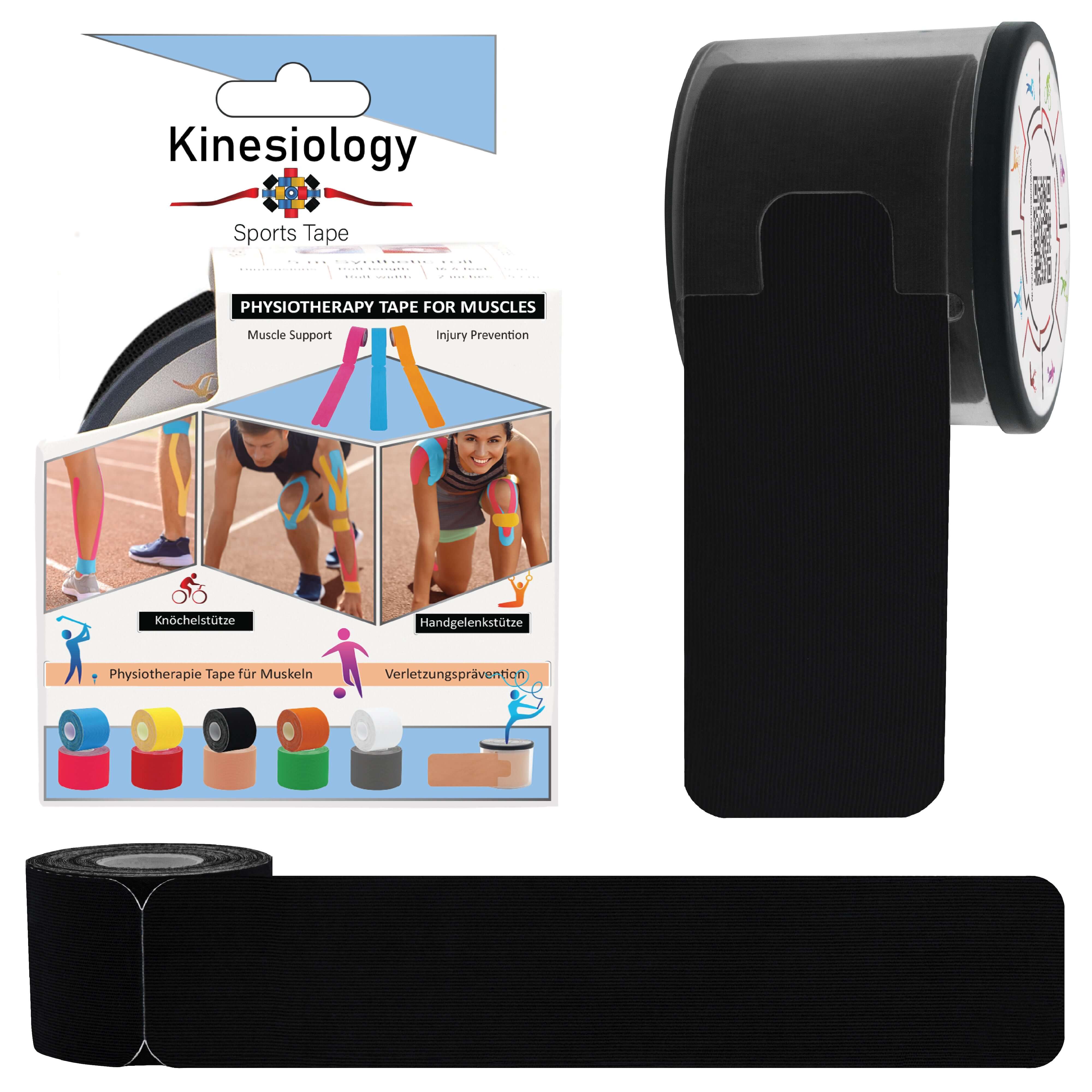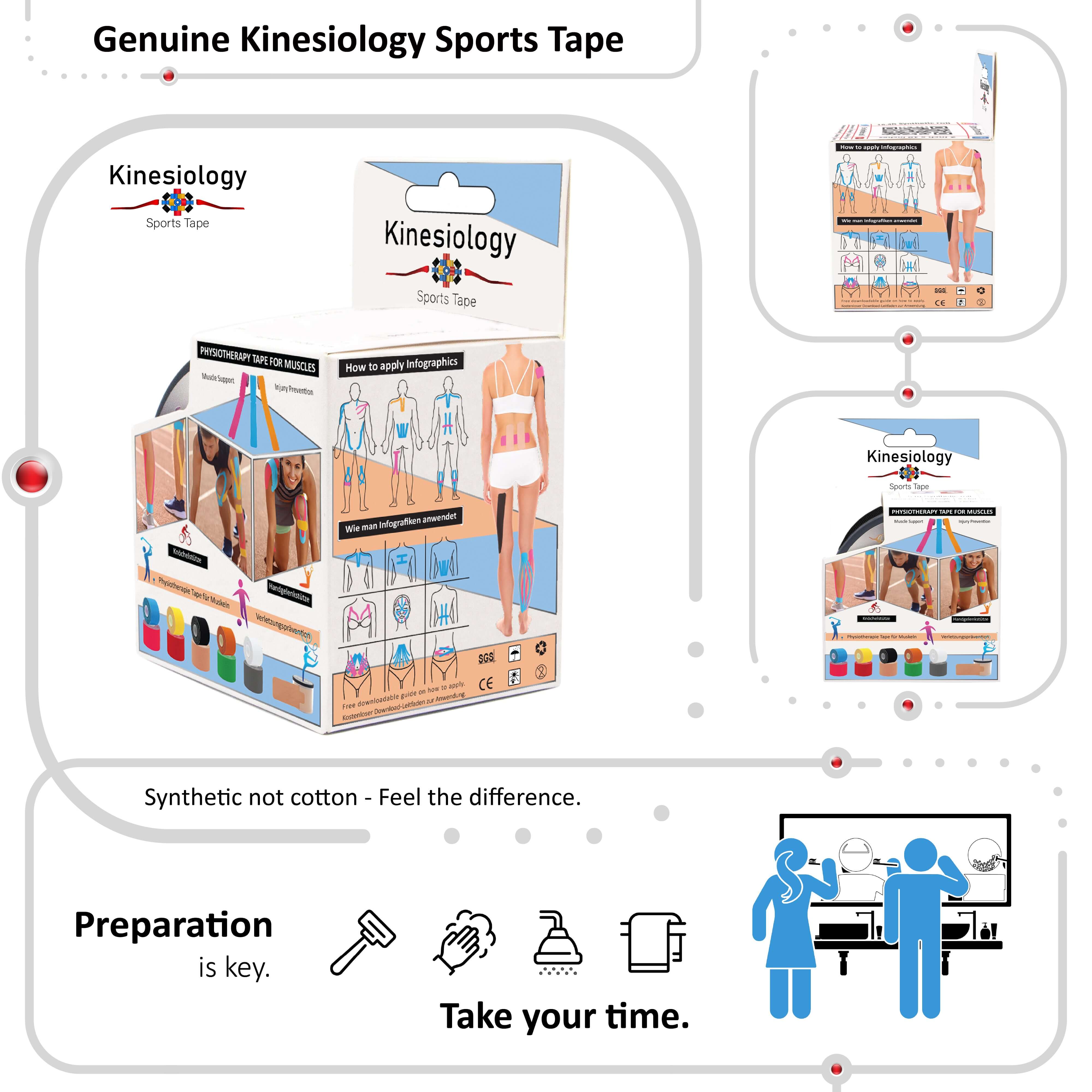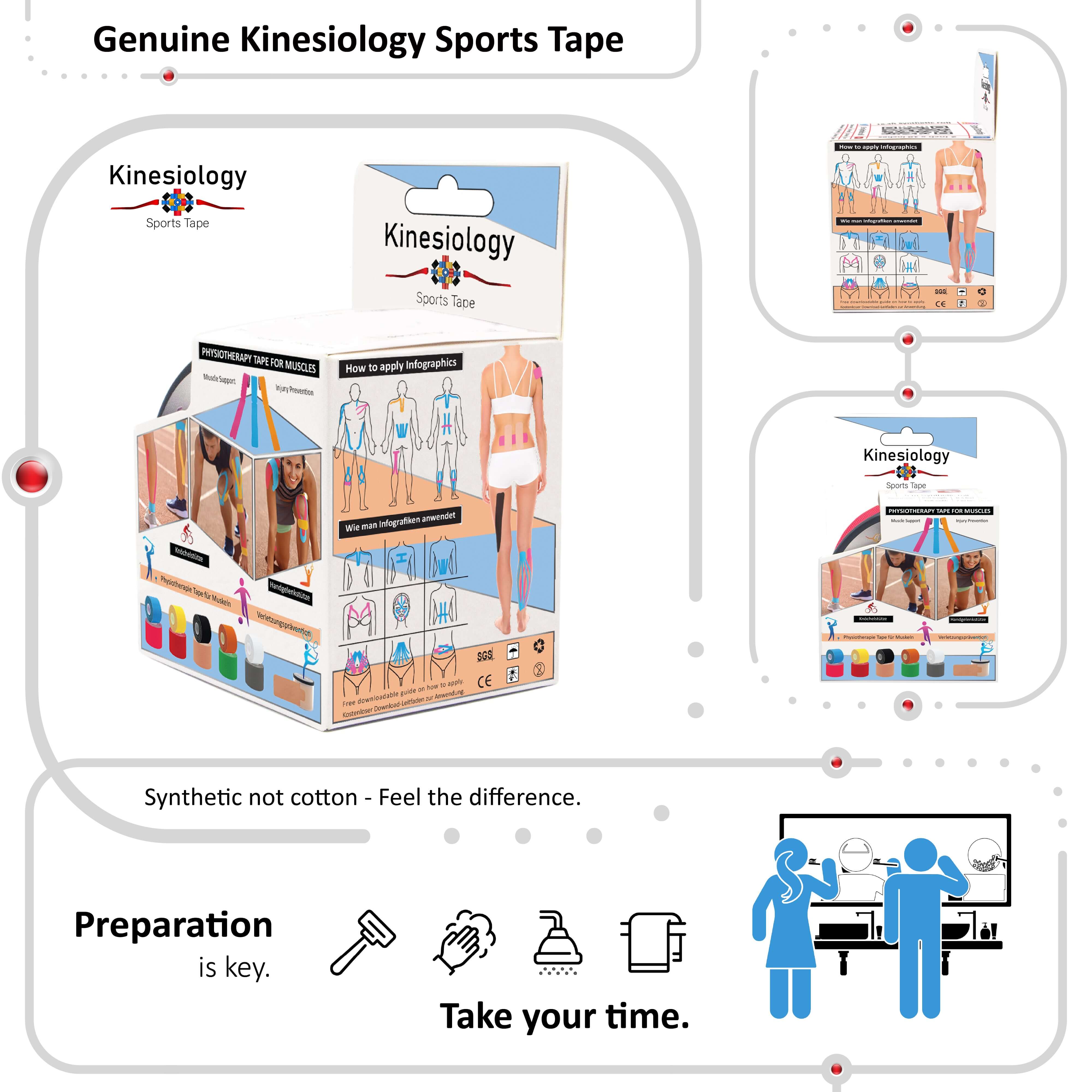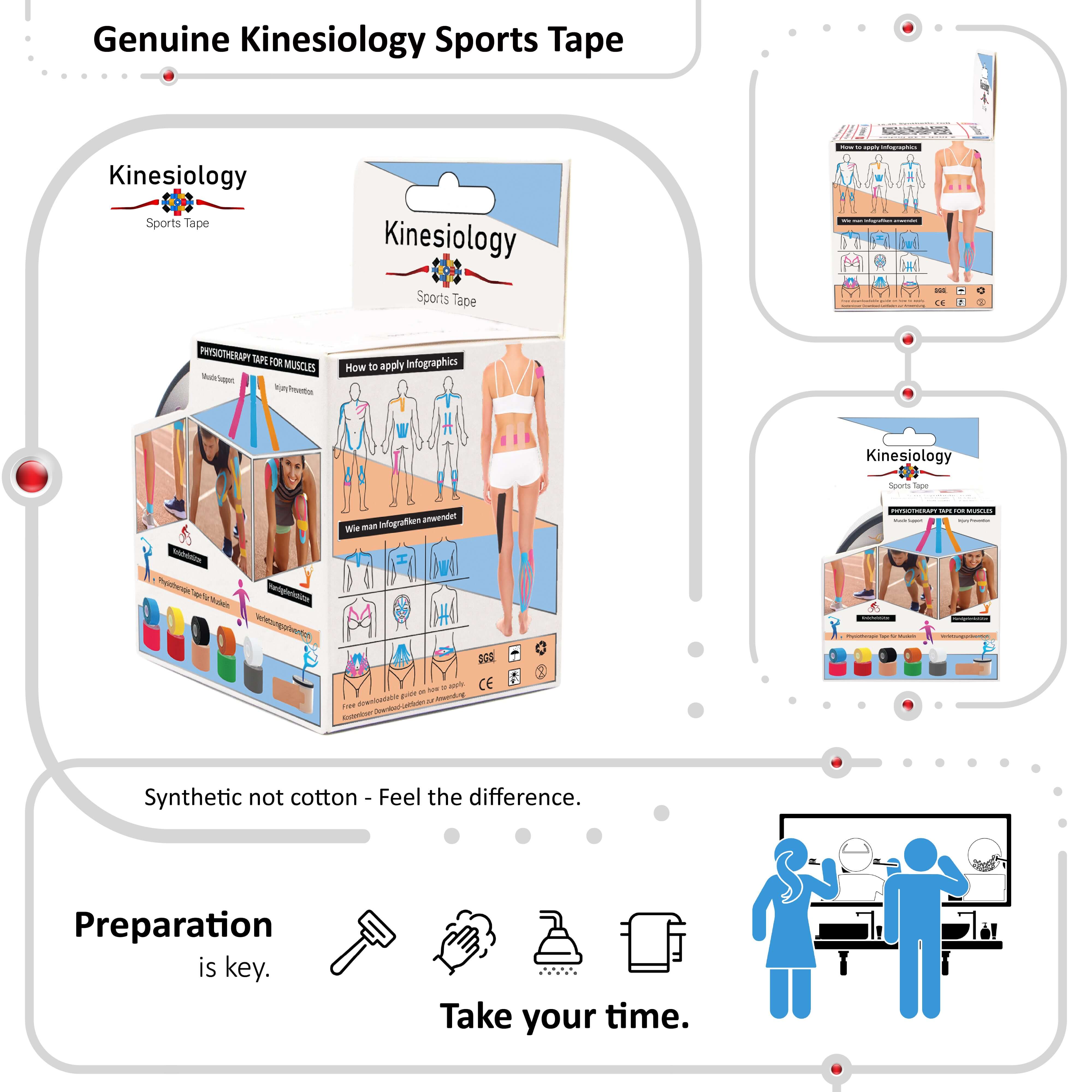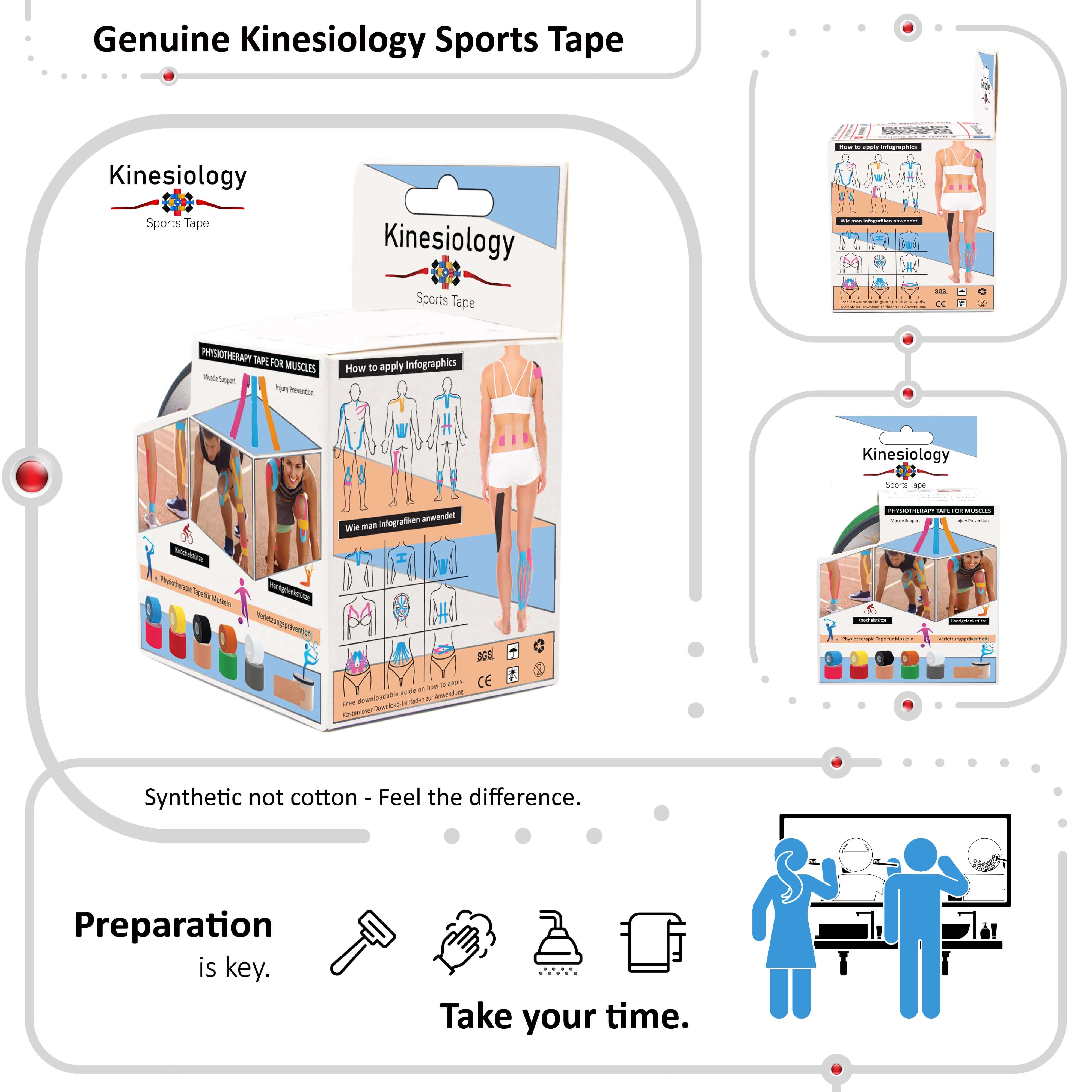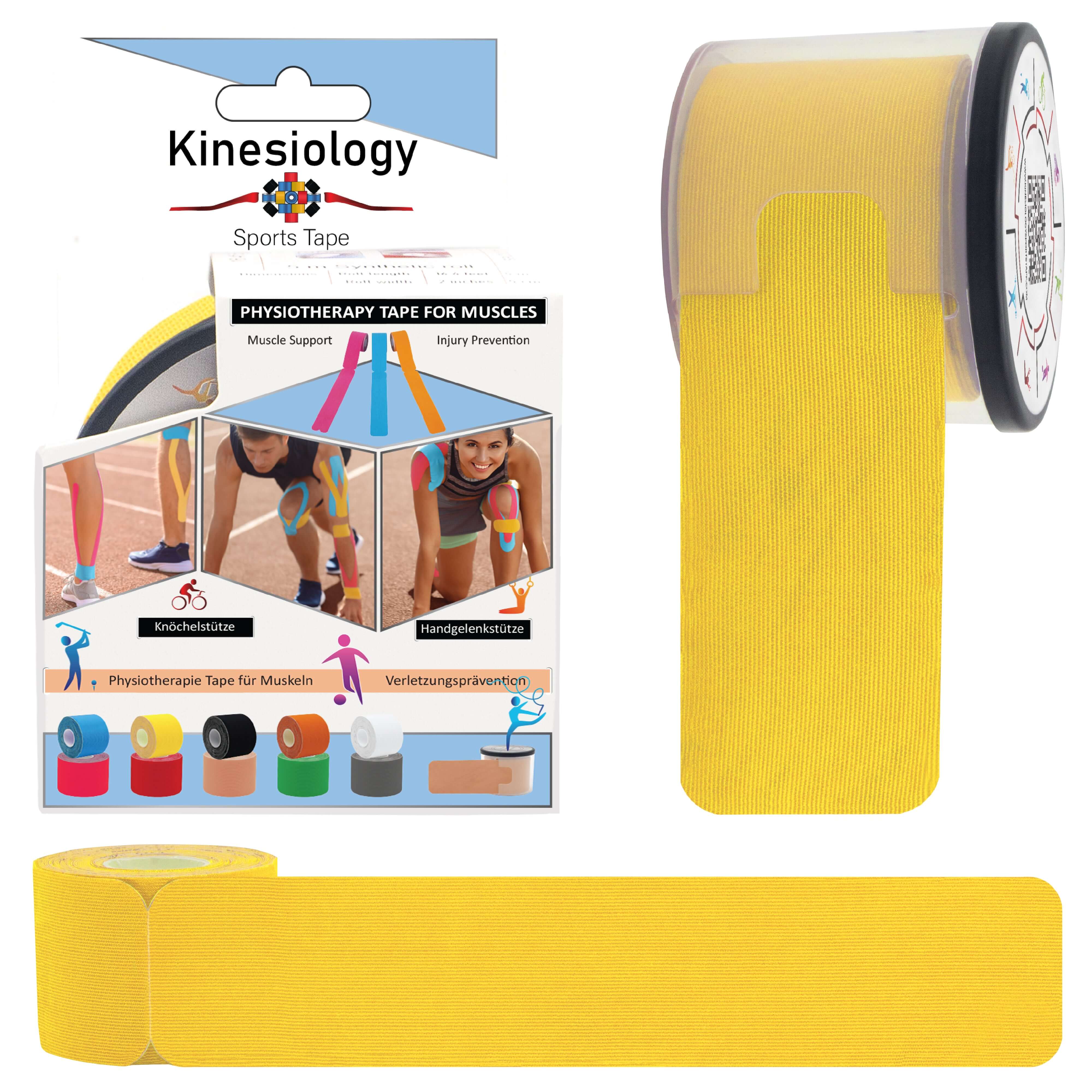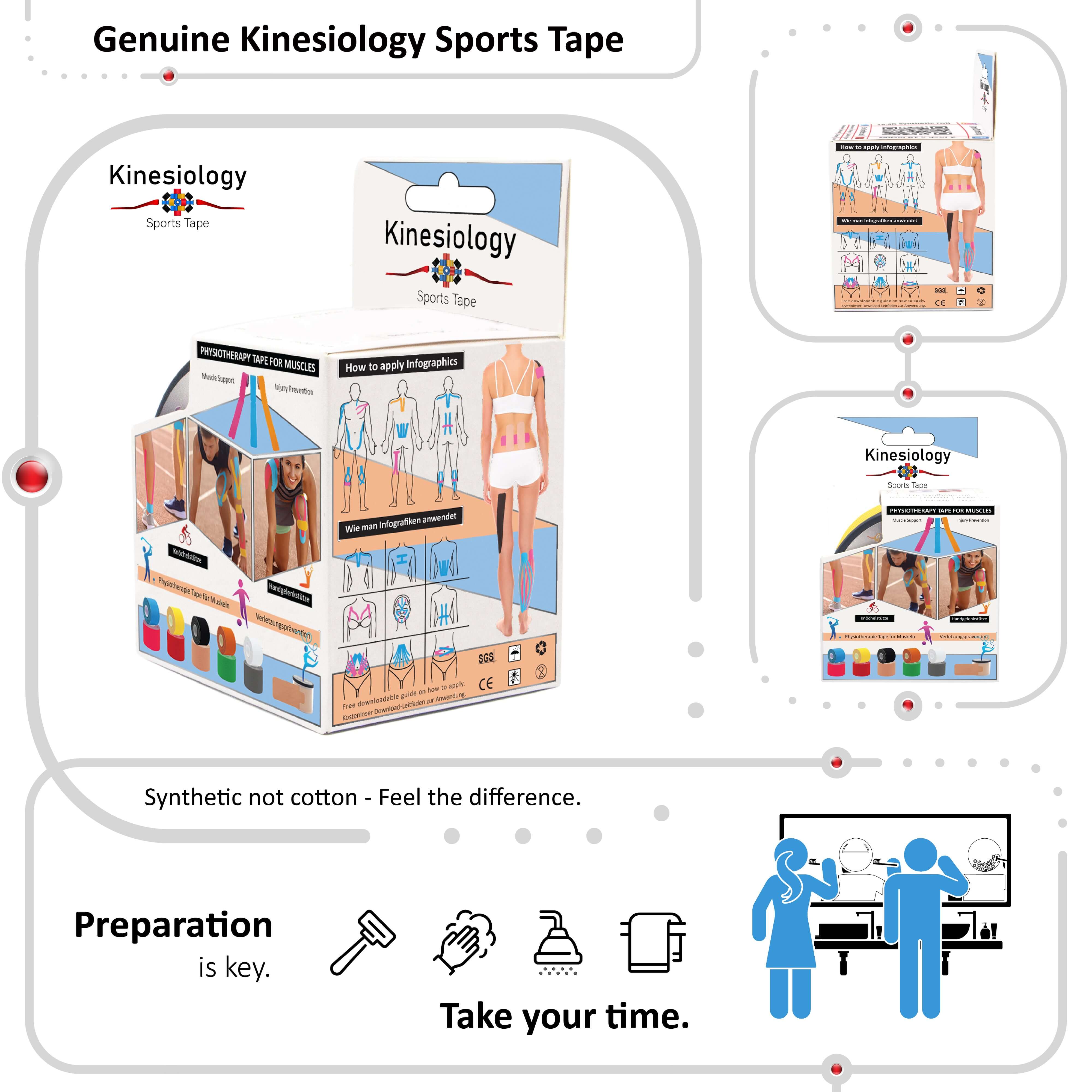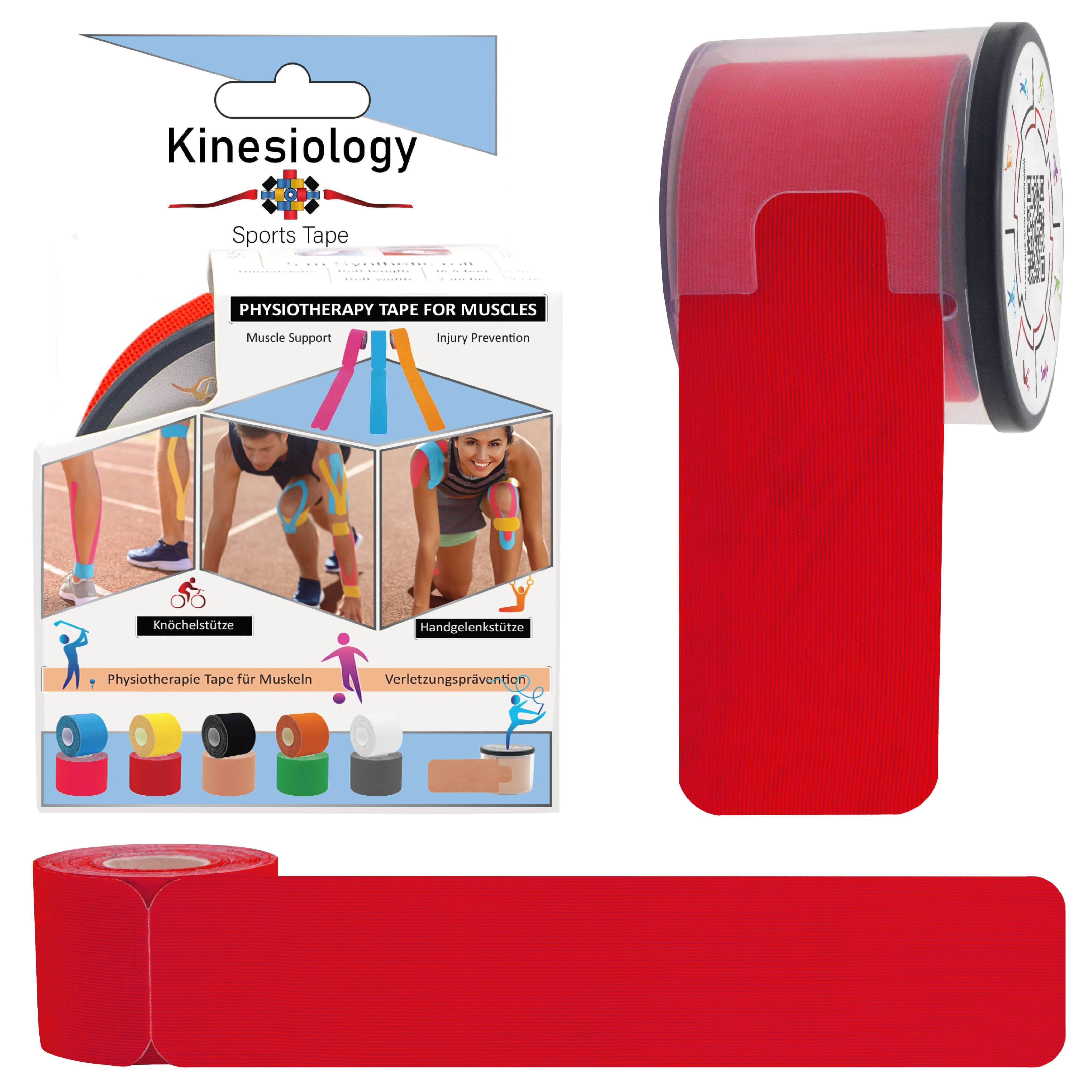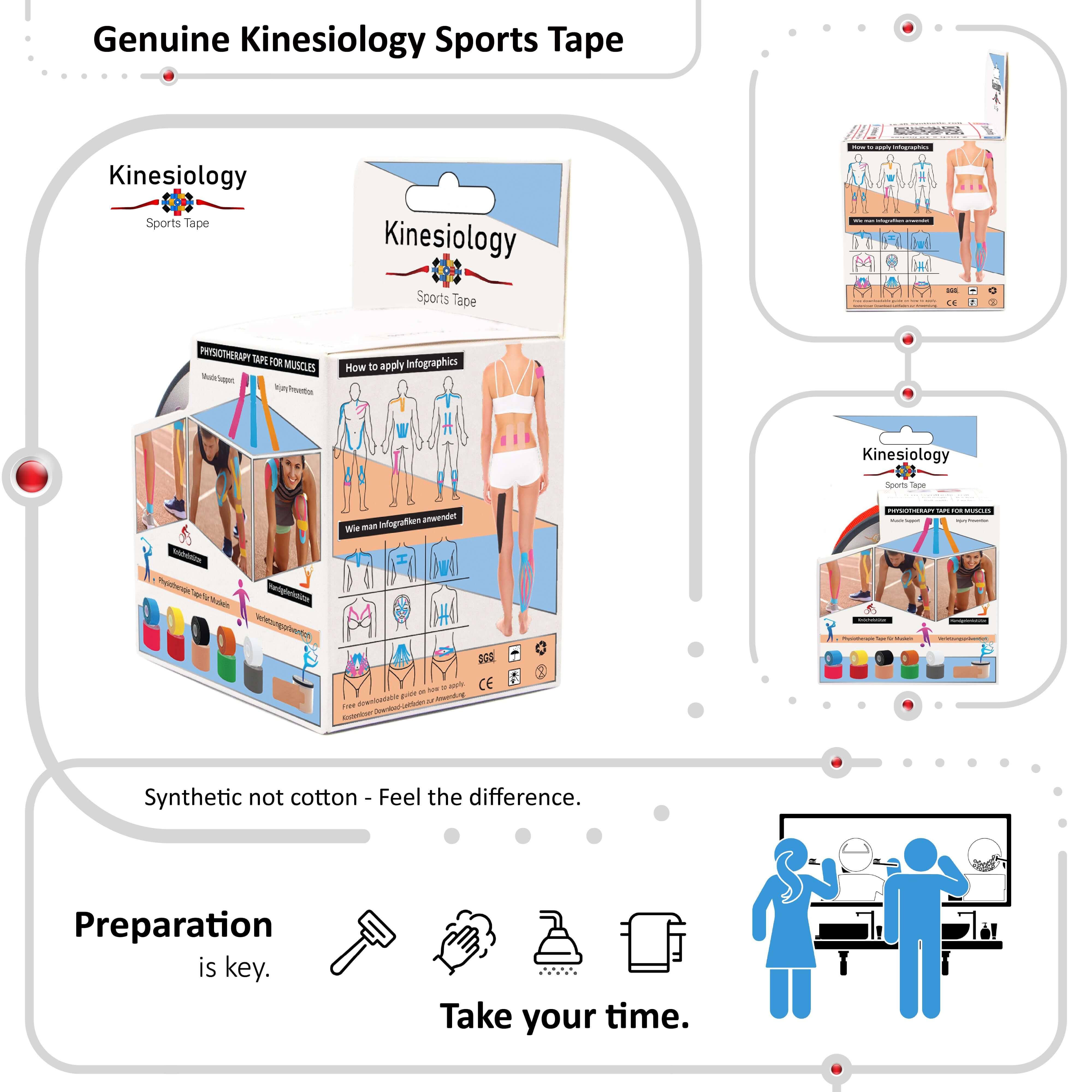
Kinesiology Tape for Knee Pain Relief: Complete Guide to Therapeutic Taping Techniques

Knee pain affects millions of people worldwide, from weekend warriors to professional athletes, and from young adults to seniors dealing with age-related joint issues. The knee joint, being one of the largest and most complex joints in the human body, is particularly susceptible to injury and pain due to its weight-bearing nature and the significant forces it experiences during daily activities [1]. Traditional treatment approaches often involve rest, medication, or restrictive bracing, but kinesiology tape offers a revolutionary alternative that provides support while maintaining mobility and promoting natural healing processes.
Kinesiology tape has emerged as a game-changing therapeutic tool for knee pain management, offering a non-invasive, drug-free approach to pain relief and functional improvement. Unlike traditional rigid taping methods that restrict movement, kinesiology tape works with the body's natural biomechanics to provide support, reduce pain, and enhance healing while allowing full range of motion [2]. This unique approach makes it particularly valuable for individuals who need to maintain their activity levels while managing knee pain.
The effectiveness of kinesiology tape for knee pain has been extensively studied, with research demonstrating significant improvements in pain levels, functional capacity, and quality of life for individuals with various knee conditions [3]. From patellofemoral pain syndrome to osteoarthritis, from ligament injuries to post-surgical recovery, kinesiology tape has proven its versatility and effectiveness across a wide spectrum of knee-related issues.
This comprehensive guide will explore the science behind kinesiology tape's effectiveness for knee pain, provide detailed application techniques for various knee conditions, and offer evidence-based strategies for maximizing therapeutic outcomes. Whether you're dealing with acute injury, chronic pain, or looking to prevent future knee problems, understanding how to properly apply and utilize kinesiology tape can be a valuable addition to your pain management toolkit.
Understanding Knee Anatomy and Common Pain Patterns
To effectively use kinesiology tape for knee pain relief, it's essential to understand the complex anatomy of the knee joint and the various structures that can contribute to pain and dysfunction. The knee is a synovial hinge joint that consists of three main articulations: the tibiofemoral joint between the thigh bone and shin bone, the patellofemoral joint between the kneecap and thigh bone, and the superior tibiofibular joint between the two bones of the lower leg [4].
The knee joint is stabilized by a complex network of ligaments, including the anterior cruciate ligament (ACL), posterior cruciate ligament (PCL), medial collateral ligament (MCL), and lateral collateral ligament (LCL). These structures work together to provide stability while allowing the knee to flex, extend, and rotate slightly during movement [5]. Additionally, the menisci, which are C-shaped cartilage structures, act as shock absorbers and help distribute forces across the joint surface.
The muscles surrounding the knee play crucial roles in both movement and stability. The quadriceps muscle group at the front of the thigh is responsible for knee extension and helps control knee flexion during weight-bearing activities. The hamstring muscles at the back of the thigh provide knee flexion and work with the quadriceps to stabilize the joint during dynamic activities [6]. The calf muscles, particularly the gastrocnemius, also contribute to knee stability and function.
Common knee pain patterns often reflect dysfunction in specific anatomical structures. Anterior knee pain, particularly around the kneecap, is frequently associated with patellofemoral pain syndrome, which affects the way the kneecap tracks over the thigh bone during movement [7]. This condition is often related to muscle imbalances, particularly weakness in the vastus medialis oblique (VMO) portion of the quadriceps muscle.
Medial knee pain may indicate issues with the MCL, medial meniscus, or the pes anserine bursa, which is located on the inner side of the knee below the joint line. Lateral knee pain can be associated with iliotibial band syndrome, lateral meniscus tears, or LCL injuries [8]. Posterior knee pain may result from hamstring strains, Baker's cysts, or posterior cruciate ligament issues.
Understanding these pain patterns is crucial for effective kinesiology tape application because different conditions require different taping strategies. The tape must be positioned and tensioned appropriately to address the specific biomechanical issues contributing to each individual's knee pain [9].
The Science Behind Kinesiology Tape's Effectiveness for Knee Pain
The therapeutic effects of kinesiology tape on knee pain operate through multiple physiological mechanisms that work synergistically to reduce pain and improve function. Understanding these mechanisms helps explain why kinesiology tape can be so effective for knee conditions and guides proper application techniques [10].
The neurological effects of kinesiology tape are among the most significant contributors to pain relief. When applied to the skin, the tape stimulates mechanoreceptors, which are sensory receptors that respond to mechanical pressure and distortion. This stimulation activates the gate control theory of pain, where non-painful sensory input can inhibit the transmission of pain signals to the brain [11]. This mechanism provides immediate pain relief and can help break the cycle of pain and muscle guarding that often perpetuates knee problems.
The tape also enhances proprioception, which is the body's ability to sense joint position and movement. Improved proprioception is crucial for knee stability and injury prevention, as it allows the nervous system to make rapid adjustments to maintain joint alignment and prevent harmful movements [12]. Research has shown that kinesiology tape application can significantly improve proprioceptive awareness in individuals with knee injuries, leading to better movement patterns and reduced risk of re-injury.
Circulatory effects represent another important mechanism of action. The lifting effect created by kinesiology tape increases the space between the skin and underlying tissues, promoting better circulation of blood and lymphatic fluids [13]. This improved circulation helps reduce inflammation, accelerate the removal of metabolic waste products, and enhance the delivery of nutrients and oxygen to healing tissues. For knee conditions involving swelling or inflammation, these circulatory benefits can be particularly significant.
The mechanical support provided by kinesiology tape differs fundamentally from traditional rigid taping. Rather than restricting movement, kinesiology tape provides dynamic support that assists muscle function while allowing full range of motion [14]. This support can help correct faulty movement patterns, reduce stress on injured structures, and provide confidence for individuals returning to activity after injury.
Muscle facilitation is another key mechanism, particularly relevant for knee conditions involving muscle weakness or inhibition. Kinesiology tape can be applied in patterns that enhance muscle activation and coordination, helping to address the muscle imbalances that often contribute to knee pain [15]. This is particularly important for the VMO muscle, which is frequently weak or inhibited in individuals with patellofemoral pain syndrome.
Research studies have consistently demonstrated the effectiveness of kinesiology tape for various knee conditions. A systematic review published in the Journal of Sports Medicine and Physical Fitness found that kinesiology tape significantly reduced pain and improved function in individuals with patellofemoral pain syndrome [16]. Another study in the American Journal of Sports Medicine showed that kinesiology tape application improved quadriceps muscle activation and reduced pain in athletes with knee injuries [17].
Comprehensive Assessment: Identifying the Right Taping Strategy
Before applying kinesiology tape for knee pain, a thorough assessment is essential to identify the underlying causes of pain and determine the most appropriate taping strategy. This assessment should include evaluation of pain patterns, movement quality, muscle function, and any structural abnormalities that may be contributing to the problem [18].
Pain assessment should begin with a detailed history of the onset, location, and characteristics of the knee pain. Understanding whether the pain is acute or chronic, constant or intermittent, and what activities aggravate or relieve it provides valuable insights into the underlying pathology [19]. The location of pain can help identify which structures are involved and guide tape placement decisions.
Movement assessment is crucial for identifying biomechanical issues that may be contributing to knee pain. Observe the individual's walking pattern, noting any limping, altered stride length, or compensatory movements. Assess knee range of motion, looking for limitations in flexion or extension that may indicate joint stiffness or muscle tightness [20]. Functional movements like squatting, lunging, and single-leg balance can reveal movement quality issues and muscle weaknesses that need to be addressed.
Muscle strength and activation patterns should be evaluated, with particular attention to the quadriceps, hamstrings, and hip muscles. Weakness in the VMO is commonly associated with patellofemoral pain, while hip muscle weakness can contribute to poor knee alignment during functional activities [21]. Manual muscle testing and observation of muscle activation during movement can help identify these deficits.
Palpation of the knee structures can help identify areas of tenderness, swelling, or muscle tension. Key areas to assess include the patella and surrounding soft tissues, the joint lines where the menisci are located, the ligament attachment sites, and the muscle bellies and tendons around the knee [22]. This information helps determine which structures need support and where tape should be applied for maximum benefit.
Special tests may be appropriate to rule out specific pathologies. Tests for ligament integrity, meniscus tears, and patellofemoral dysfunction can help confirm suspected diagnoses and guide treatment decisions [23]. However, it's important to note that significant injuries should be evaluated by qualified healthcare professionals before attempting self-treatment with kinesiology tape.
Based on the assessment findings, specific taping goals can be established. These might include pain reduction, muscle facilitation, joint support, swelling reduction, or movement pattern correction. Clear goals help guide tape selection, application technique, and evaluation of treatment effectiveness [24].
Essential Kinesiology Tape Application Techniques for Knee Pain
Mastering the fundamental application techniques for knee taping is essential for achieving optimal therapeutic outcomes. The knee's complex anatomy and range of motion require specific approaches that differ from taping other body parts [25].
Preparation for knee taping begins with proper positioning. The individual should be seated or lying with the knee in a comfortable position that allows access to all areas that will be taped. For most knee applications, positioning the knee in 20-30 degrees of flexion provides optimal tape tension when the knee moves through its full range of motion [26].
Skin preparation is particularly important for knee applications due to the significant movement and potential for sweating in this area. Thoroughly clean the skin with alcohol or soap and water, and ensure it's completely dry before application. For individuals with excessive hair, trimming may be necessary to ensure proper adhesion [27].
The basic I-strip technique forms the foundation for most knee taping applications. This involves applying a single strip of tape along the length of a muscle or over a specific area of pain. For quadriceps support, the I-strip is typically applied from the hip to just below the kneecap, with the knee in slight flexion to ensure appropriate tension during movement [28].
Anchor placement is critical for knee applications. Anchors should be positioned on stable areas of skin that don't experience significant stretching during knee movement. Common anchor locations include the mid-thigh for quadriceps applications and the upper calf for applications targeting the back of the knee [29].
The Y-strip technique is particularly useful for knee applications because it allows the tape to follow the natural contours of muscles around the joint. For patellofemoral applications, a Y-strip can be applied with the base anchored above the kneecap and the tails following the vastus medialis and vastus lateralis muscles [30].
Tension application varies depending on the therapeutic goal. For muscle support applications, 25-50% tension is typically appropriate, while pain relief applications may require less tension to avoid restricting circulation. The key is to apply enough tension to achieve the desired lifting effect without causing discomfort or skin puckering [31].
Direction of application should follow the natural lines of muscle fibers or the desired direction of lymphatic drainage. For muscle facilitation, tape is generally applied from origin to insertion in the direction of muscle contraction. For inhibition or pain relief, tape may be applied in the opposite direction [32].
Specific Taping Protocols for Common Knee Conditions
Different knee conditions require specific taping approaches to address their unique pathophysiology and biomechanical issues. Understanding these condition-specific protocols ensures that kinesiology tape is applied in the most effective manner for each individual's needs [33].
Patellofemoral pain syndrome is one of the most common knee conditions and responds well to kinesiology tape when applied correctly. The primary goals of taping for this condition are to improve patellar tracking, enhance VMO activation, and reduce pain during functional activities [34]. A common approach involves applying a Y-strip with the base anchored above the patella and the tails following the VMO and vastus lateralis muscles. Additional strips may be applied to provide medial glide correction if the patella tends to track laterally.
For individuals with patellofemoral pain, the tape should be applied with the knee in slight flexion and the quadriceps relaxed. This positioning ensures that the tape provides appropriate support during knee extension while not restricting normal patellar movement [35]. The VMO portion of the Y-strip may be applied with slightly more tension to enhance activation of this frequently weak muscle.
Iliotibial band syndrome requires a different approach, focusing on reducing tension in the IT band and addressing any underlying hip muscle weaknesses. Taping for IT band syndrome typically involves applying strips along the lateral thigh from the hip to just below the knee [36]. The tape should be applied with minimal tension to avoid further tightening the already tense IT band. Additional strips may be applied to support the gluteus medius muscle, which often contributes to IT band problems when weak.
Meniscus injuries present unique challenges for kinesiology tape application. While tape cannot directly heal a torn meniscus, it can help reduce pain and improve function by supporting the surrounding muscles and improving joint mechanics [37]. For medial meniscus issues, tape may be applied to support the VMO and reduce stress on the medial compartment of the knee. Lateral meniscus problems may benefit from tape applications that support the lateral quadriceps and reduce lateral compartment loading.
Ligament injuries, particularly ACL injuries, can benefit from kinesiology tape applications that enhance proprioception and provide dynamic stability. The tape cannot replace the mechanical function of a torn ligament, but it can help improve neuromuscular control and confidence during movement [38]. Applications typically involve multiple strips that provide support in multiple planes of movement, mimicking the multidirectional stability normally provided by intact ligaments.
Osteoarthritis of the knee presents unique considerations for kinesiology tape application. The goals of taping for arthritis include pain reduction, improved joint mechanics, and enhanced muscle function [39]. Gentle applications with minimal tension are typically most appropriate, focusing on pain relief and circulation enhancement rather than aggressive muscle facilitation. The tape can help reduce the perception of joint stiffness and improve confidence in movement.
Post-surgical knee conditions require careful consideration of healing tissues and surgical restrictions. Kinesiology tape can be valuable for reducing post-operative swelling, supporting weakened muscles, and improving scar tissue mobility [40]. However, applications should be coordinated with the surgical team and physical therapy protocols to ensure they don't interfere with healing or rehabilitation goals.
Advanced Taping Techniques and Combination Approaches
As proficiency with basic knee taping techniques develops, advanced applications and combination approaches can provide enhanced therapeutic benefits for complex or persistent knee problems [41].
Multi-strip applications involve using several pieces of tape in coordinated patterns to address multiple aspects of knee dysfunction simultaneously. For example, a comprehensive patellofemoral taping approach might include a Y-strip for muscle support, an I-strip for patellar positioning, and fan strips for swelling reduction [42]. These complex applications require careful planning to ensure that individual strips don't interfere with each other and that the overall pattern achieves the desired therapeutic goals.
Biomechanical correction taping focuses on addressing movement pattern dysfunctions that contribute to knee pain. This might involve taping not only the knee itself but also related areas like the hip and ankle that influence knee mechanics [43]. For example, individuals with knee valgus (knock-knee) during squatting might benefit from tape applications that encourage hip external rotation and ankle stability in addition to direct knee support.
Lymphatic drainage applications are particularly valuable for individuals with significant knee swelling or those recovering from injury or surgery. These applications use fan cuts and minimal tension to enhance lymphatic flow and reduce edema [44]. The tape is typically applied in patterns that follow lymphatic drainage pathways, directing fluid away from the swollen area toward functioning lymph nodes.
Proprioceptive enhancement taping focuses specifically on improving joint position sense and neuromuscular control. These applications often use lighter tensions and may incorporate textured tapes or specific patterns designed to maximize sensory input [45]. Research has shown that proprioceptive taping can significantly improve balance and movement quality in individuals with knee injuries.
Combination therapy approaches integrate kinesiology tape with other therapeutic interventions for enhanced outcomes. Tape may be used in conjunction with exercise therapy, manual therapy, or other modalities to create a comprehensive treatment approach [46]. For example, applying kinesiology tape before performing specific exercises can enhance muscle activation and movement quality during the exercise session.
Sport-specific taping applications are designed to address the unique demands of particular athletic activities. A basketball player might need tape applications that provide support during jumping and cutting movements, while a runner might benefit from applications that address the repetitive stress of distance running [47]. Understanding the biomechanical demands of specific sports helps guide these specialized applications.
Monitoring Progress and Adjusting Treatment Approaches
Effective use of kinesiology tape for knee pain requires ongoing monitoring of progress and willingness to adjust treatment approaches based on individual responses [48]. This systematic approach ensures that taping interventions remain effective and appropriate as conditions change.
Pain monitoring should be conducted using standardized scales that allow for objective tracking of improvements. The Visual Analog Scale (VAS) or Numeric Rating Scale (NRS) can be used to track pain levels before, during, and after tape application [49]. It's important to assess pain during various activities, as kinesiology tape may be more effective for certain types of movement or loading conditions.
Functional assessment provides valuable insights into the real-world effectiveness of kinesiology tape applications. Simple functional tests like stair climbing, squatting, or single-leg balance can be performed before and after tape application to assess improvements in movement quality and confidence [50]. More formal functional assessment tools like the Knee Injury and Osteoarthritis Outcome Score (KOOS) can provide comprehensive evaluation of knee-related quality of life.
Range of motion measurements help determine whether kinesiology tape is maintaining or improving knee mobility. Restrictions in knee flexion or extension can indicate that tape tension is too high or that the application pattern needs modification [51]. Regular assessment of range of motion ensures that the tape is providing support without creating unwanted restrictions.
Muscle function assessment can help determine whether kinesiology tape is achieving its intended effects on muscle activation and strength. Simple manual muscle tests or observation of muscle activation during functional movements can provide insights into whether the tape is successfully facilitating weak muscles or inhibiting overactive ones [52].
Skin condition monitoring is essential for safe long-term use of kinesiology tape. Regular inspection for signs of irritation, allergic reactions, or skin breakdown helps prevent complications and ensures that tape can continue to be used safely [53]. Any signs of adverse skin reactions should prompt immediate tape removal and reassessment of application techniques or tape selection.
Activity tolerance assessment helps determine whether kinesiology tape is allowing individuals to return to their desired activities safely and effectively. Gradual progression of activity levels while monitoring symptoms helps ensure that the tape is providing adequate support for increasing demands [54].
Based on monitoring results, treatment approaches may need to be modified. This might involve adjusting tape tension, changing application patterns, or incorporating additional therapeutic interventions. The key is to remain flexible and responsive to individual needs and responses [55].
Integration with Comprehensive Knee Pain Management
While kinesiology tape can be highly effective for knee pain relief, it's most beneficial when integrated into a comprehensive management approach that addresses all aspects of knee health and function [56].
Exercise therapy remains the cornerstone of knee pain management, and kinesiology tape can enhance the effectiveness of exercise interventions. Tape can be applied before exercise sessions to improve muscle activation patterns, provide confidence during movement, and reduce pain that might otherwise limit exercise participation [57]. Specific exercises that target muscle weaknesses identified during assessment should be prioritized, with tape applications designed to support and enhance these exercises.
Manual therapy techniques, including joint mobilization, soft tissue massage, and trigger point release, can be effectively combined with kinesiology tape applications. Manual therapy can address joint restrictions and muscle tension that might interfere with optimal tape effectiveness, while tape can help maintain the benefits of manual therapy between treatment sessions [58].
Education about proper movement mechanics and activity modification is crucial for long-term success. Individuals should understand how their daily activities and movement patterns contribute to knee pain and learn strategies for reducing harmful stresses on the knee joint [59]. Kinesiology tape can serve as a reminder and support system while new movement patterns are being learned and integrated.
Lifestyle modifications, including weight management, appropriate footwear selection, and activity modification, play important roles in comprehensive knee pain management. Kinesiology tape can provide support during the transition period while these lifestyle changes are being implemented [60].
Professional guidance from qualified healthcare providers is essential for complex or persistent knee problems. Physical therapists, athletic trainers, and other healthcare professionals can provide expert assessment, treatment planning, and monitoring that ensures kinesiology tape is used safely and effectively as part of a comprehensive treatment approach [61].
Conclusion: Maximizing the Therapeutic Potential of Kinesiology Tape for Knee Pain
Kinesiology tape represents a valuable tool in the management of knee pain, offering a unique combination of support, pain relief, and functional enhancement that can significantly improve quality of life for individuals with various knee conditions. The key to success lies in understanding the underlying principles of tape application, conducting thorough assessments to guide treatment decisions, and implementing evidence-based application techniques that address the specific needs of each individual [62].
The versatility of kinesiology tape makes it suitable for a wide range of knee conditions, from acute injuries to chronic degenerative conditions. Its ability to provide therapeutic benefits while maintaining full range of motion makes it particularly valuable for individuals who need to maintain their activity levels while managing knee pain [63]. However, success requires proper application techniques, appropriate monitoring, and integration with other therapeutic interventions.
As research continues to expand our understanding of kinesiology tape's mechanisms of action and optimal application techniques, its role in knee pain management will likely continue to evolve. Current evidence strongly supports its use as an adjunctive therapy that can enhance the effectiveness of other interventions while providing immediate symptomatic relief [64].
For individuals considering kinesiology tape for knee pain, it's important to approach its use systematically and with realistic expectations. While tape can provide significant benefits, it's not a cure-all and works best when combined with appropriate exercise, lifestyle modifications, and professional guidance. With proper application and integration into a comprehensive management approach, kinesiology tape can be a powerful tool for achieving better knee health and improved function [65].
References
[1] https://www.hss.edu/health-library/move-better/kinesiology-tape [2] https://www.kttape.com/blogs/how-to-apply/full-knee-support [3] https://pmc.ncbi.nlm.nih.gov/articles/PMC8169012/ [4] https://www.physio-pedia.com/Knee_Taping [5] https://www.thysol.us/how-to-tape/knee-pain/ [6] https://sporttape.co.uk/blogs/news/can-kinesiology-tape-relieve-knee-pain [7] https://www.tsaog.com/blog/2024/10/21/how-to-tape-a-knee-for-stability-and-pain/ [8] https://www.healthline.com/health/how-to-tape-a-knee [9] https://www.kttape.com/pages/knee-pain [10] https://www.verywellhealth.com/kinesiology-tape-in-physical-therapy-2696435 [11] https://www.performancehealth.com/articles/kinesiology-tape-101-everything-you-need-to-know [12] https://pmc.ncbi.nlm.nih.gov/articles/PMC7349891/ [13] https://www.premierhealth.com/your-health/articles/women-wisdom-wellness-/how-tape-heals-the-secret-behind-kinesiology-tape [14] https://oaidocs.com/2018/09/14/benefits-of-kinesiology-tape/ [15] https://www.healthline.com/health/kinesiology-tape [16] https://therapypartnersgroup.com/7-conditions-that-kinesio-tape-can-benefit-from/ [17] https://tapegeeks.com/blogs/news/benefits-of-kinesiology-tape [18] https://coastalorthopedics.com/blog/benefits-of-kinesio-tape/ [19] https://www.nike.com/a/how-to-tape-an-ankle [20] https://www.performancehealthacademy.com/ankle-sprain-kinesiology-taping-technique-tapetuesday.html [21] https://pmc.ncbi.nlm.nih.gov/articles/PMC4851123/ [22] https://www.healthline.com/health/how-to-tape-an-ankle [23] https://www.ladybirdpt.com/post/taping-a-pregnant-belly [24] https://adatewithbaby.com/how-to-kinesio-tape-pregnant-belly/ [25] https://pmc.ncbi.nlm.nih.gov/articles/PMC5751726/ [26] https://pmc.ncbi.nlm.nih.gov/articles/PMC4837927/ [27] https://kinesiologysportstape.com/en-us/pages/pregnancy-taping [28] https://www.thysol.us/how-to-tape/lymphatic-taping-lymphedema/ [29] https://kinesiotaping.com/kinesio-taping-of-superficial-lower-extremity-lymphatic-pathways/ [30] https://pmc.ncbi.nlm.nih.gov/articles/PMC9224659/ [31] https://pmc.ncbi.nlm.nih.gov/articles/PMC4520333/ [32] https://www.kttape.com/products/course-3-applied-kinesiology-taping-for-lymphatic-assist [33] https://www.performancehealthacademy.com/how-to-use-kinesiology-tape-to-reduce-swelling.html [34] https://www.ptlinktherapy.com/kinesio-taping-vs-athletic-taping [35] https://www.physixgear.com/blogs/sport-and-wellness/kinesiology-tape-vs-athletic-tape-which-one-is-right-for-me [36] https://www.hinklerpodiatry.com.au/k-tape-vs-sports-tape/ [37] https://goodhealthphysicaltherapy.com/what-is-the-difference-between-kinesiotape-and-athletic-tape/ [38] https://setptusa.com/blog/physical-therapy/kt-tape-kinesio-tape/ [39] https://www.thysol.com.au/sportstape/ [40] https://www.orthopedicsri.com/blog-items/kinesiology-tape-fake-fad-functional/ [41] https://www.kttape.com/pages/how-to-apply-kt-tape [42] https://www.healthandcare.co.uk/blog/ultimate-guide-how-to-apply-kinesiology-tape.html [43] https://www.performancehealthacademy.com/plantar-fasciitis-kinesiology-taping-technique-tapetuesday.html [44] https://bracelab.com/clinicians-classroom/which-tape-is-best-for-treating-plantar-fasciitis [45] https://www.mdpi.com/2075-1729/14/2/249 [46] https://heelthatpain.com/treatments/kinesiology-tape/ [47] https://www.verywellhealth.com/treat-your-plantar-fasciitis-with-kinesiology-tape-2696033 [48] https://pubmed.ncbi.nlm.nih.gov/38243921/ [49] https://www.kttape.com/blogs/how-to-apply/middle-back [50] https://pmc.ncbi.nlm.nih.gov/articles/PMC6657767/ [51] https://kinesiotape.com/kinesio-pre-cut-back/ [52] https://thejupiterchiropractor.com/blog/how-to-kinesio-tape-for-lower-back-pain [53] https://www.performancehealthacademy.com/star-pattern-kinesiology-taping-technique-for-lumbar-pain.html [54] https://www.healthcentral.com/condition/back-pain/can-you-kt-tape-your-back-pain-away [55] https://www.kttape.com/pages/back [56] https://pubmed.ncbi.nlm.nih.gov/27634093/ [57] https://www.kttape.com/blogs/how-to-apply/general-shoulder [58] https://www.thysol.us/how-to-tape/shoulder-pain-instability/ [59] https://kinesiotape.com/kinesio-pre-cut-shoulder/ [60] https://www.verywellhealth.com/support-your-shoulder-with-kinesiology-tape-2696040 [61] https://sporttape.co.uk/pages/kinesiology-taping-shoulder [62] https://kinesiologysportstape.com/en-us/pages/shoulder-pain [63] https://www.kttape.com/blogs/how-to-apply/ankle-stability [64] https://www.thysol.us/how-to-tape/ankle-stability/ [65]

